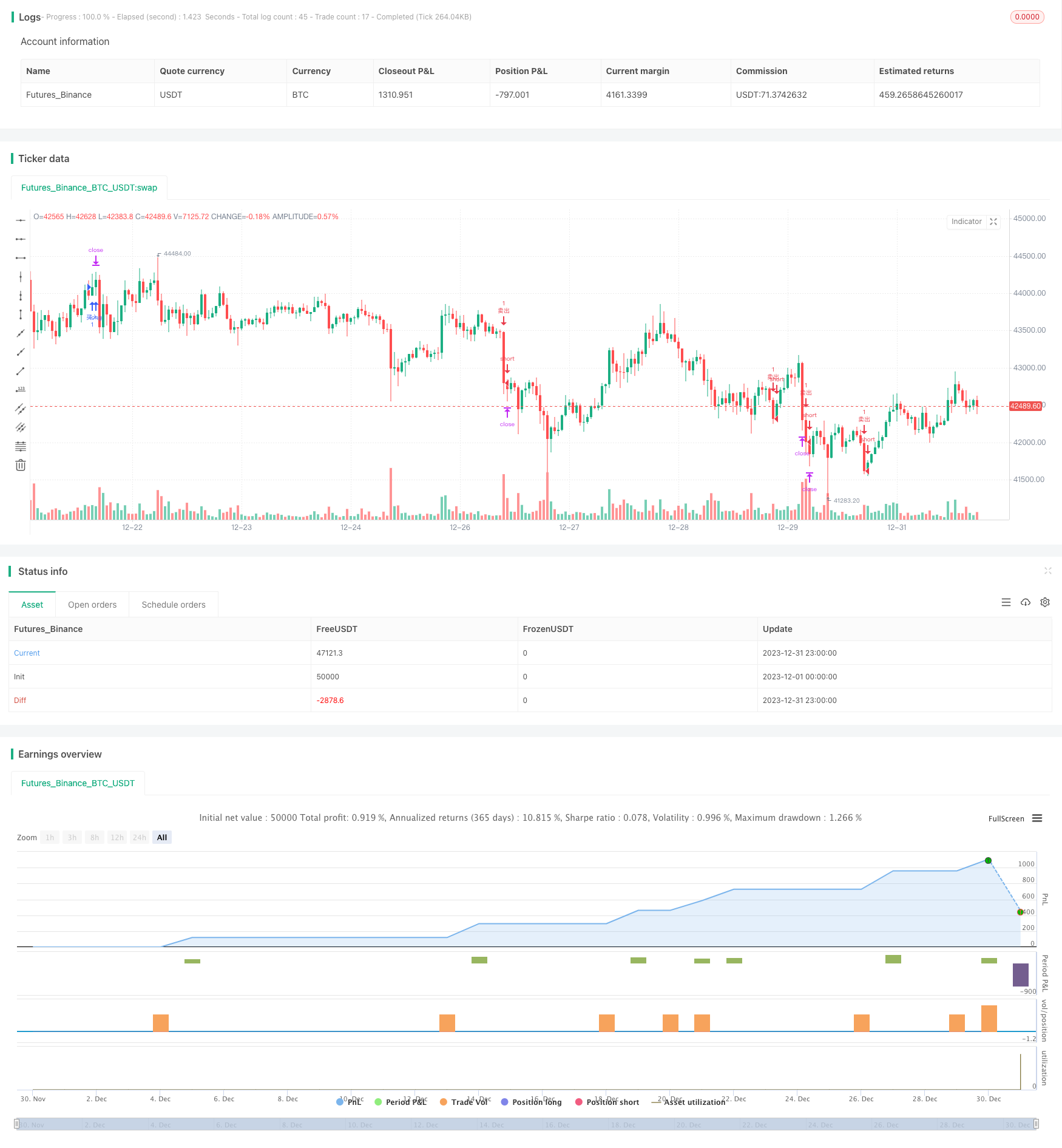
概述
本策略通过对经典MACD指标进行多项优化,实现更准确可靠的交易信号产生和更严格的风险控制。主要优化内容包括:1引入RSI指标避免过度买卖;2加入成交量确认;3设置止损止盈;4优化参数组合。
策略原理
基本原理仍然是MACD指标的快慢线金叉做多,死叉做空。主要优化体现在:
引入RSI指标,这样可以避免在市场被高估或低估的情况下产生虚假信号。RSI可以有效反映市场的买卖压力。
加入成交量的判断,只有在成交量放大的情况下才产生信号,避免无效突破。成交量的放大可以证实趋势的力度。
设置止损止盈机制,可以动态跟踪市场波动将风险控制在可承受范围。止损可以有效控制单笔损失;止盈可以锁定利润,避免利润回吐。
优化MACD参数组合,调整快慢线和信号线的参数,取得更好的参数组合,产生更精确的交易信号。
优势分析
这套策略通过多重优化后的MACD具有以下显著优势:
减少了虚假信号的产生,信号的可靠性和准确性大为提高。
严格的止损止盈机制控制了交易风险,最大程度锁定了盈利。
MACD的参数经过优化调整,更契合不同品种和时间周期。
多指标组合产生信号,系统性强,适应更广泛的市场环境。
整体而言,资金效率和收益风险比有很大提高。
风险分析
本策略也存在一些风险需要防范:
优化后参数不一定百分之百适合所有品种和周期,需要根据实际情况调整。
信号产生频率会有所降低,存在一定程度的漏单风险。
在极端市场情况下,多个指标可能会发出冲突信号,需要人工进行判断。
自动止损在快速跳空的情况下可能会过早止损,给利润带来一定风险。
对策主要是人工监控判断,根据市场情况适当调整参数,并控制好仓位规模。
优化方向
本策略可以继续从以下方面进行优化:
测试更多指标的组合,如布林带、KD等,形成指标群体判定。
应用机器学习算法自动优化参数,使之更智能化。
加入更严格的资金管理策略,如固定份额、Kelly公式等。
开发自动止盈策略,根据趋势和波动率调整止盈点。
应用深度学习等前沿算法实现更准确预测。
总结
本策略通过原始MACD指标的多重优化,解决了MACD容易产生假信号和风险控制不足的缺点。多指标组合与止损止盈的运用使得信号更加准确可靠,风险控制也更为严密。本策略值得进一步开发与应用,是MACD指标改进的一个典范。
/*backtest
start: 2023-12-01 00:00:00
end: 2023-12-31 23:59:59
period: 1h
basePeriod: 15m
exchanges: [{"eid":"Futures_Binance","currency":"BTC_USDT"}]
*/
//@version=5
strategy("优化版MACD交易策略 ", overlay=true)
// 输入参数
fastLength = input(16, "快速线周期")
slowLength = input(34, "慢速线周期")
signalSmoothing = input(10, "信号线平滑")
rsiPeriod = input(19, "RSI周期")
overboughtRsi = 70
oversoldRsi = 30
volumeAvgPeriod = input(13, "成交量平均周期")
stopLossPerc = input.float(10.5, "止损百分比", step=0.1)
takeProfitPerc = input.float(0.3, "止盈百分比", step=0.1)
// 计算指标
[macdLine, signalLine, _] = ta.macd(close, fastLength, slowLength, signalSmoothing)
rsi = ta.rsi(close, rsiPeriod)
volumeAvg = ta.sma(volume, volumeAvgPeriod)
// 交易信号
longCondition = ta.crossover(macdLine, signalLine) and macdLine > 0 and rsi < overboughtRsi and volume > volumeAvg
shortCondition = ta.crossunder(macdLine, signalLine) and macdLine < 0 and rsi > oversoldRsi and volume > volumeAvg
// 止损和止盈
longStopLossPrice = close * (1 - stopLossPerc / 100)
longTakeProfitPrice = close * (1 + takeProfitPerc / 100)
shortStopLossPrice = close * (1 + stopLossPerc / 100)
shortTakeProfitPrice = close * (1 - takeProfitPerc / 100)
// 执行交易
if longCondition
strategy.entry("买入", strategy.long)
strategy.exit("买入止损止盈", "买入", stop=longStopLossPrice, limit=longTakeProfitPrice)
if shortCondition
strategy.entry("卖出", strategy.short)
strategy.exit("卖出止损止盈", "卖出", stop=shortStopLossPrice, limit=shortTakeProfitPrice)